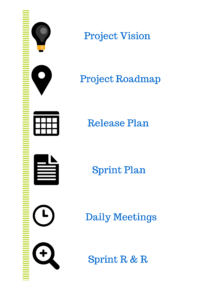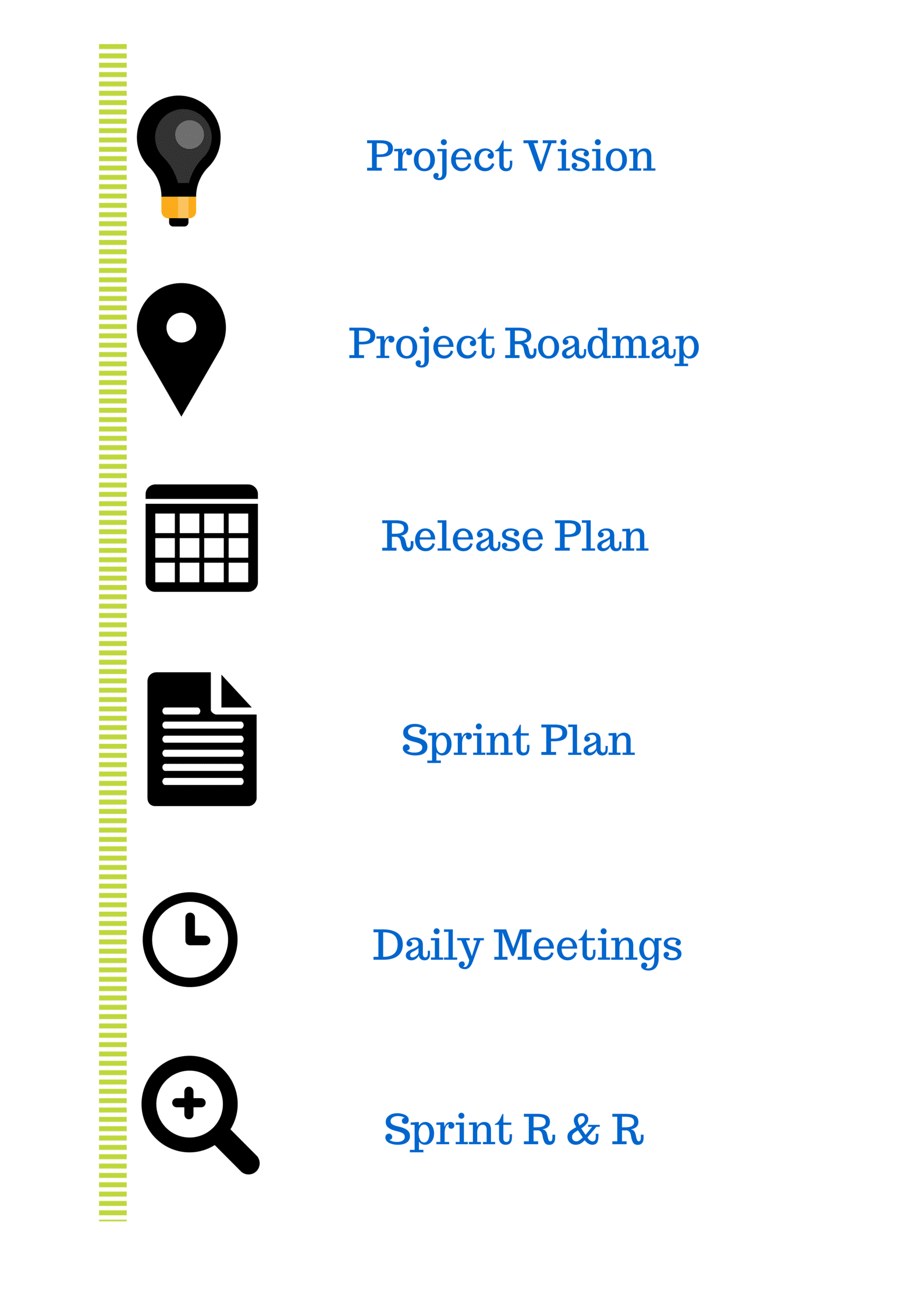
Agile project management is a rage in entrepreneurial and enterprise circles. It is being hailed as one of the most flexible and interactive methodologies ever invented. In this new paradigm, the whole process of project management is broken down into a number of phases, following which the end product gets developed in sprints and thus the features and functionalities are added gradually over a period of time with the approval of the client or the product owner.
Workzone realizes the importance of being well-versed with agile project management principles. The net is replete with information that is stuffed full of jargon. Thus our Management Monday “How-To” trend will be kept alive and kicking with a short series of easy to understand pieces which will help complete novices and beginners realize the concepts of agile project management and understand exactly why it is an improvement over other legacy methods.
Part 1 deals with an introduction to agile project management, its most obvious benefits and a high level bird’s eye view of the phases it entails.
IN A FEW WORDS AGILE PROJECT MANAGEMENT IS
A repetitive (iterative) and incremental process mainly used to develop software solutions.
According to the Portland Business Journal, anywhere between 65% and 80% IT projects fail to meet their objectives, deadlines or budget stipulations.
This is a staggering number which doesn’t bode well for the industry. It implies that a client initiating a software development project must survive on a hope and prayer and expect a miracle if the endeavour is to attain reasonable success.
HOW DOES AGILE PROJECT MANAGEMENT CHANGE THAT SCENARIO?
The most important distinguishing feature of an agile project management process is foresight.
With all traditional methodologies, a full commitment from the client or product owner is needed. Unless and until a beta of the product is launched, it is almost impossible to assess whether the attempt is successful or not.
However with an agile methodology like SCRUM (which we will discuss in later stages), the product is developed in sprints or sessions and each sprint tackles a certain percentage of features and functions. Thus the essential viability of the endeavour is revealed fast. If the future doesn’t look too promising, product owner can pull out or put a plug on the project till a better plan or product can be envisioned.
Apart from this extremely convenient factor, with agile project management:
- Better quality products can be developed because there is active involvement of all team members and advisers.
- There is greater client satisfaction because of the provision of sprint assessment where the progress is evaluated and the product created is discussed in detail.
- There is a greater sense of involvement and accountability. This translates into better team dynamics and morale. In short an agile project manager has the scope of getting the most out of his resources.
- There is an ongoing sense of urgency because the large cumbersome project is divided into smaller ones (called sprints). This ensures that team members give their best throughout the project and stay on their toes.
- Better project predictability is possible. Since the team members working through the sprints do not change and the features to be developed over each iterative session are well mapped out, the cost of each sprint can be easily estimated. Agile projects have a lower tendency of straying from the allocated budget.
AN OVERVIEW OF THE KEY PHASES AN AGILE PROJECT MANAGER SHOULD KNOW
- Phase 1 or the Project Vision. This phase is also known as Product Vision but if we wish to take agile management techniques out of the monopoly of the IT industry, the first stage must be re-named to Project Vision. This involves deep discussion by the product owner (or the client) in order to come up with an accurate representation of the end deliverable they wish to achieve and the ways in which the deliverable can boost or align with the larger enterprise vision.
- Phase 2 or the Project Roadmap. Over this phase the clients come up with the specific requirements list of the end deliverable, a loose time frame to follow and the tentative costs (and labour investment) involved in executing the project. At the end of this stage, the product owners should have a good idea of what the high priority, non-negotiable features for the deliverable are.
- Phase 3 or the Release Plan. Taking inspiration from the Project Roadmap, the clients create a Release Plan. This merely maps out the features which must be developed according to their priority. The Release plan heavily influences the fourth phase of the Sprint Plan.
- Phase 4 or the Sprint Plan. This plan is extremely important. As discussed, agile management guides product (or deliverable) development in short well planned sessions called sprints. Depending upon the Release Plan shared by the product owner (or client), the development team then decides the agenda for each sprint – what has to be achieved, the activities which need to be initiated and so on.
- Phase 5 or Daily Meetings. With the map chalked out, the development team meets every day for 15 minutes to discuss progress, to-dos and possible road blocks.
- Phase 6 or Sprint R & R. Phase 6 is divided into two segments:
–Sprint Review – Where the development team shares the features developed as per the Sprint Plan with the product owners.
-Sprint Retrospection – Where the development team comes together with an experienced body of project managers specializing in agile methodologies (called the SCRUM masters) to analyse and evaluate the sprint performance.
Agile project management is extremely logical. It is a gated approach, which means that the succeeding phase can’t be activated unless the preceding phase has client approval.
Every project manager should know the basis of agile management in order to develop superior products and deliver a higher success rate.
In the next article, we will explore SCRUM as an agile method in order to better understand this process.




